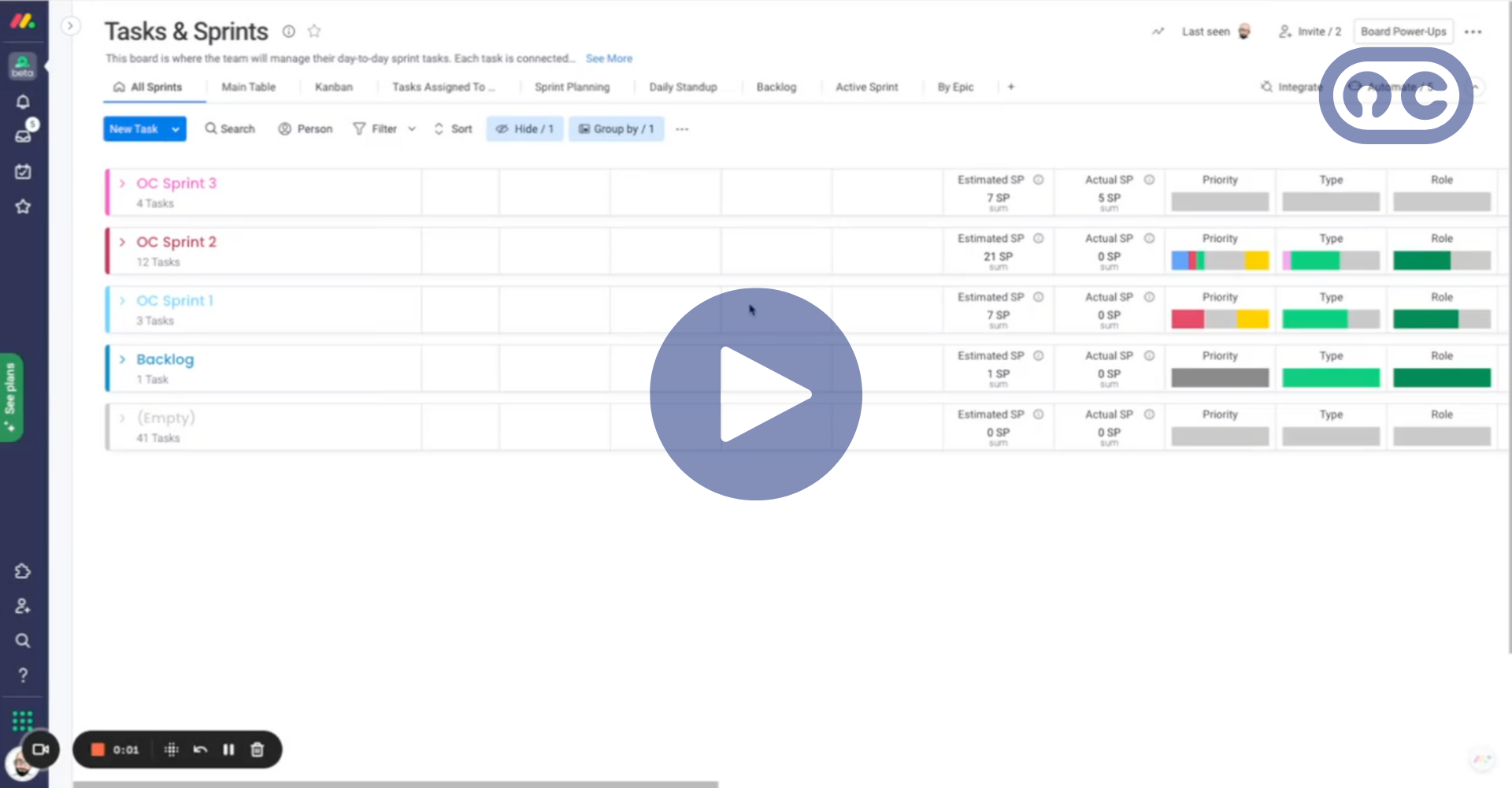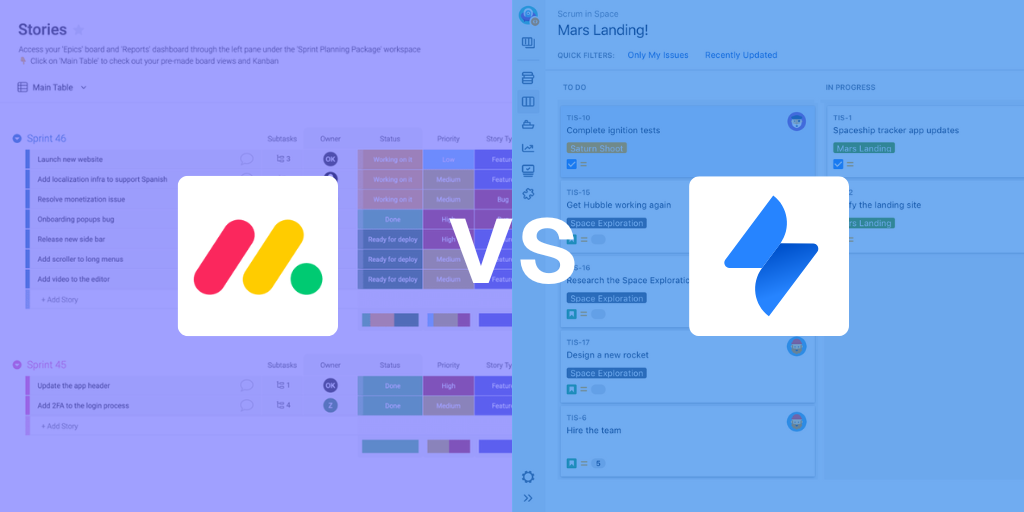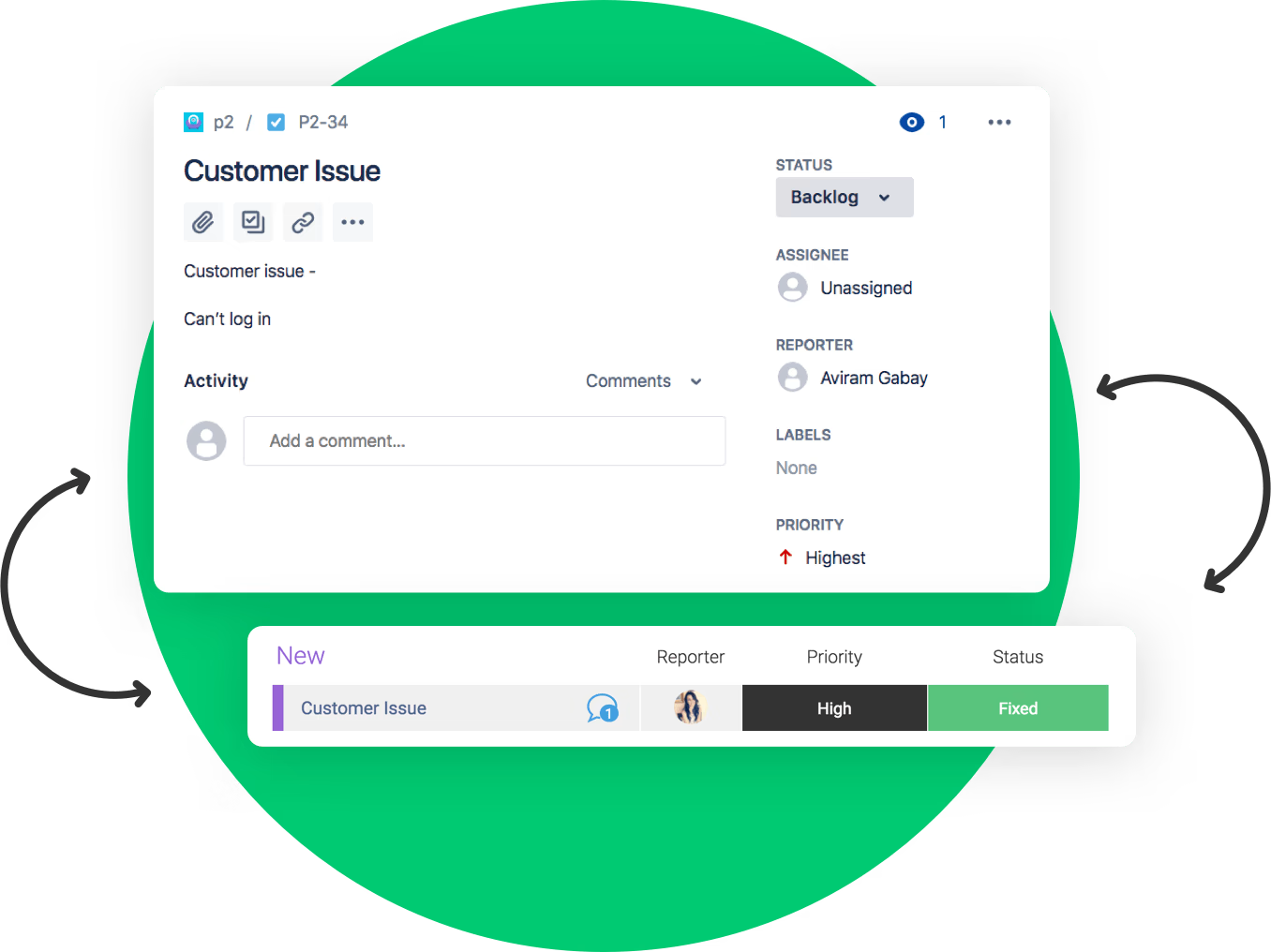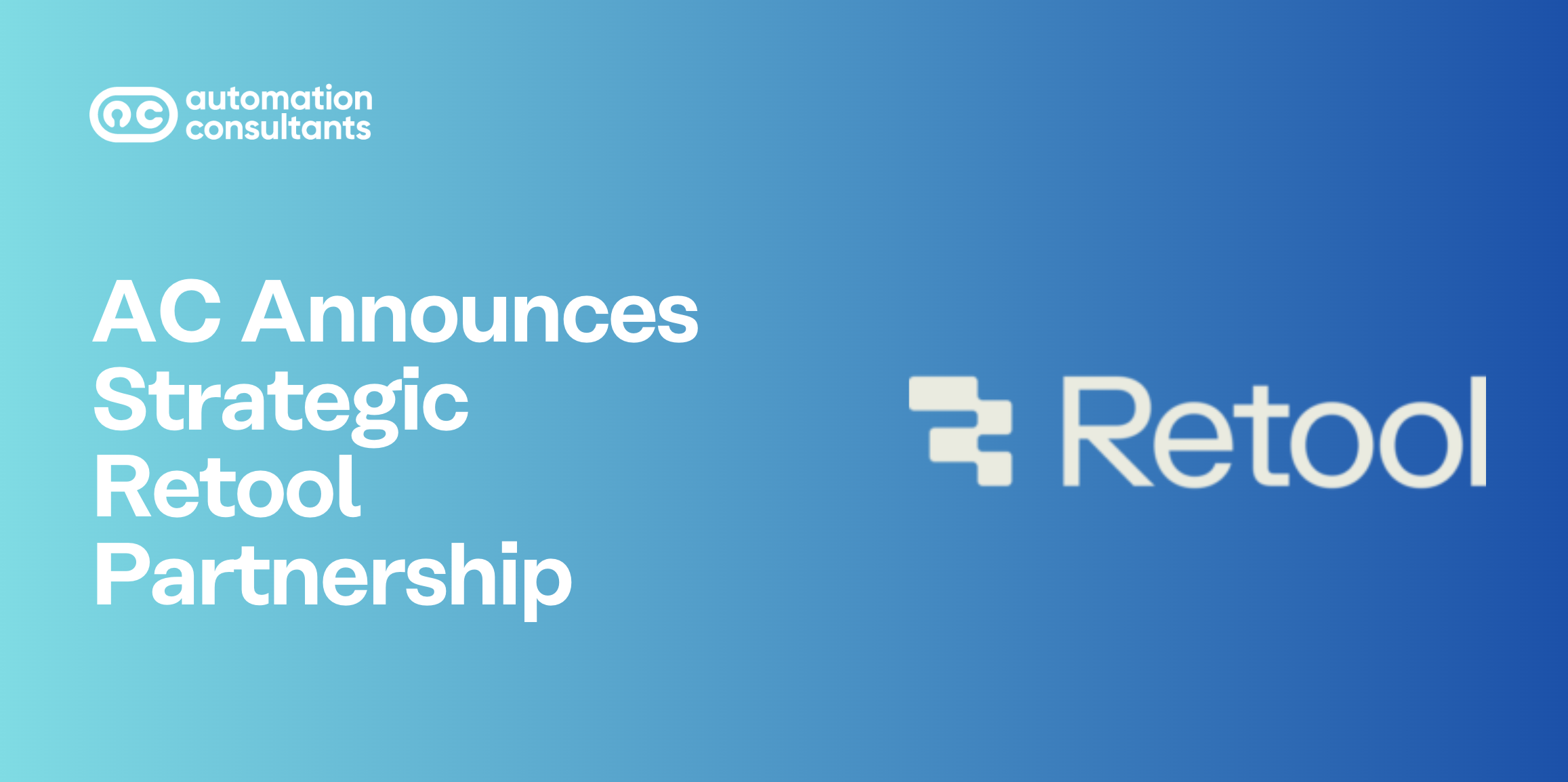No matter what business areas your teams are working in, we’re spoilt for choice with project management software. There are a raft of tools out there designed to track work, streamline processes and enhance collaboration. But how do you know which product – or combination of tools – is the right fit for your organisation?
Happily, we’re here to help. In this post, we’re focusing on two significant names in the project management space: monday.com and Jira.
With years of experience working with both tools, we can guide you through the ultimate comparison: Jira vs monday.com. Which one will come out on top for you?
Background and context
monday.com burst onto the scene in 2014, and has grown rapidly since then. Now used in over 200 countries, the product is trusted by over 255,000 customers to manage their work.
Jira, meanwhile, was launched back in 2002 as Atlassian’s flagship product. Starting life as a bug-tracking tool for software development teams, and known as Jira Software, it has now evolved to become the most widely used Agile project management platform, with 65,000 companies using it across the globe.
Both tools have evolved considerably since their inception. monday.com has three core products, each designed to meet the use cases of specific business teams, whilst Jira sits at the heart of the Atlassian ecosystem, which also includes Jira Service Management and Confluence.
Spotlight on monday.com
monday.com began life as a user-friendly, simple Work OS platform – ostensibly designed for any and all teams to manage their work.
Over time, the tool has evolved to meet more specific use cases for business teams, launching its first range of monday products in 2022.
At the time of writing (July 2024), monday.com provides three core products:
monday dev for software development and product teams
monday CRM for sales and customer-facing teams
monday work management for any team seeking a project management tool
Excitingly, a monday service product is also on the horizon. Currently in beta, we’ll be keeping a close eye on its journey towards general availability.
monday.com products
We previously took a deep dive into monday dev here (and plan to do the same for monday CRM), so we’ll just provide a high-level overview of each product in today’s post.
monday dev
Designed for software developers and product managers, monday dev combines the simple interface of monday.com with Agile templates and tools.
The platform includes core features that support Agile team working, including Sprint Management tools, scrum boards, a Kanban view and a Sprint Retrospective view.
When you combine these with robust road-mapping capabilities, teams should have all the functionality needed to plan, manage, review and progress work in an iterative manner.
Alongside its fellow products, CRM and work management, monday dev also benefits from a wide-range of automations and ease of configuration.
💡 monday dev vs Jira Software
At this stage you may be forgiven for thinking that monday dev is the direct challenger to Jira Software. Surely there’s no need to also focus on monday CRM or work management in this article?
Until recently, we may have agreed with you. After all, Jira was historically a tool used by software development teams. In the advent of Team ’24, however, this has changed. Atlassian announced that it was combining Jira Software and Jira Work Management (JWM) to create a singular, powerful project management tool for all teams: Jira.
So, let’s move on to monday CRM and work management – and then we can see how Jira compares to the monday product suite.
monday dev
Originally launched as monday sales CRM, the current product has been designed to support the work of sales and customer-facing teams.
From customer onboarding and account management to customising your entire sales pipeline, monday CRM provides a wide range of pre-configured templates and automations, enabling your team to streamline repetitive tasks, benefit from no-code workflows and embed efficient processes quickly and easily.
monday work management
This product has possibly the widest remit, designed as it is to enable teams to ‘manage any project, task or workflow’.
monday work management breaks these processes down into three stages, with pre-configured templates, automations and views available to support each one:
Goals and objectives
Projects and processes
Tasks
Are you looking to get more out of your monday products? As a certified monday Silver partner, we’re ideally placed to help you optimise your monday tech stack. Whether you’re seeking monday.com training to enhance your team’s knowledge and skill, or would benefit from dedicated monday.com consultancy services to elevate your processes and achieve your objectives, turn to Automation Consultants.
Artificial Intelligence (AI) and monday.com
As with all tech vendors, monday.com has been investing significantly in its AI capabilities.
Described as ‘AI capabilities that seamlessly fit into your work’ monday AI is available across all three products on Pro and Enterprise plans.
monday have recognised both the value of AI and the apprehension that some organisations may have before using it. As such, they’ve given users control; instead of being automatically enabled, you’ll first need to approve and activate monday AI.
Once activated, you can then choose AI-powered templates from your template library, or enable it on any of your boards.
Built using Microsoft’s Azure Open AI, monday AI can streamline your work, from creating a new automation based on your own unique prompt to suggesting actions and next steps from a document.
Integrations and monday.com
monday.com supports over 200 integrations. From communication channels, like Slack or Teams, to development tools like GitHub, monday.com once again makes integrations simple with its no-code approach.
The platform also provides an open API to connect other tools your teams may need.
monday.com benefits
One of the greatest selling points of monday.com is its ease of use.
Across all three of its products, monday.com champions a no-code approach, opening up configuration capabilities that otherwise may not be possible for non-technical teams.
Alongside this, the suite of monday products can connect teams across an organisation, enabling joined-up processes and enhancing collaboration across shared projects and goals.
monday.com pricing
monday.com’s pricing across all products is based on a simple ‘per seats’ structure.
monday.com has advised that a free tier (for very small organisations with only two seats) will be coming soon, but until then, the ‘basic’ pricing tier begins at c. £8/seat for monday work management. It’s worth noting that each of the three products has a slightly different price range.
Looking to get even more out of your project management tools?
Discover how you can seamlessly integrate monday.com and Jira to enhance collaboration and streamline your workflows.Spotlight on Jira
Since its arrival as Jira Software back in 2002, Jira has become synonymous with Agile project management and software development.
Over the years, Jira Software evolved into a wider project management tool, used by wider business teams for their project management needs. And, since its recent amalgamation with Jira Work Management (JWM), Jira is now well positioned to meet the needs of all business teams – even those without great technical knowledge. As we touched on in our guide to the Future of Jira:
‘Previously, some business teams may have perceived Jira Software as too complex or overly technical for their needs. By including Jira Work Management functionality in this new all-in-one tool, Atlassian has unlocked the power of Jira and made it more accessible for teams who otherwise may not have used it – think marketing, design, finance or HR.’
Note: JWM functionality is only available in Jira Cloud.
💡 The evolution of Jira and monday.com side by side
It’s interesting that whilst monday.com has, to some extent, narrowed its focus to meet the needs of specific teams with its three products, Jira has widened its audience and use cases, going beyond its traditional software development user base.
Now, both tools offer a comparable range of project management templates and features.
Jira key features
Business team templates
Jira now includes JWM’s range of business templates, which were all designed to provide intuitive and easy-to-use project management functionality for different business teams.
Whether you’re in marketing, design or finance, Jira now provides dedicated templates, boards and features to fulfil your specific needs.
Advanced roadmaps
We mentioned this in our previous look at using Jira as a project management tool, but it’s worth repeating as it’s a highly valuable feature.
Advanced roadmaps provide extensive Agile project management capabilities, enabling you to expand your issue hierarchy beyond epics for a higher-level view and to track work from multiple projects and teams, unlocking cross-collaboration at the portfolio level. To further strengthen your planning, you can also see the capacity of multiple teams on a sprint-by-sprint basis.
One of our favourite features of Advanced Roadmaps is the Scenarios tool, which supports ‘What if?’ planning. Create multiple versions of your plan based on different outcomes (some positive, some not so…), to ensure you can prepare for all eventualities.
This feature also provides space to ‘play’. as you can test, try and tweak things in a sandbox environment.
Shared goals
Even when teams are working in distinctly different ways to one another, they should share a common organisational objective. This is even more important now that Jira has evolved into a singular project management tool for multiple business teams.
In light of this, Atlassian unveiled a new enhancement at Team ‘24: ‘Goals’.
Providing clear visibility and progress tracking, ‘Goals’ enables you to link your work to overarching company objectives, so all team members can see what they’re working towards. This functionality instils a shared sense of accountability and focus on achieving high level outcomes.
To move work forward and motivate team members, it’s essential to embed this collective visibility and understanding of objectives – both at a team and organisational level.
Would your team benefit from dedicated Jira training? To truly maximise value from your tooling, your team needs to be confident and highly skilled. That’s where our certified in-house trainers come in. With years of experience delivering training across Fortune 500 companies, we can guide you through Jira training courses to upskill your team and optimise your Atlassian toolset.
AI and Jira
Atlassian launched its AI offering, known as Atlassian Intelligence, at Team ’23.
Unlike monday AI, where you have to enable the feature, Atlassian Intelligence is automatically activated in all Cloud sites on Premium or Enterprise plans – unless you’ve opted out. Admins can manage your AI settings at any time by logging into Atlassian Administration.
Atlassian Intelligence has been built on a combination of Atlassian’s internal AI models and Open AI. The tool also makes use of your organisation’s teamwork graph, ensuring all Atlassian Intelligence output is informed by your unique processes, projects and structures.
In our Team ’24 round-up post, we shared several Atlassian Intelligence updates (including a spotlight on new tool, Rovo). Today, we’ll focus on one Jira-specific AI enhancement:
Atlassian has introduced AI capabilities to break work down into smaller, more manageable tasks. Currently in beta for Jira Premium and Enterprise, this feature could lessen the initial burden of manually creating issues, tasks and subtasks, freeing up a lot of time for teams.
Integrations and Jira
The Atlassian Marketplace is home to thousands of integrations for the entire Atlassian product suite.
Alongside the business-as-usual integrations you’d expect, like mailboxes or development platforms, there are an array of third-party apps developed to extend and enhance a product’s existing functionality.
Essentially, if you can dream it, a vendor can develop an app for it! From timesheet functionality to custom charts, the range of Jira apps can help do even more with the product.
If you hare managing a large Jira instance, you may find our guide to large Jira integration best practice a valuable ride.
Benefits of Jira
Now that Atlassian have combined Jira Software and Jira Work Management into a singular project management tool, one of the key benefits of Jira is that all teams can manage their work within one central tool.
Software development teams – historically Jira’s core audience – can still benefit from the complex and powerful Agile work tracking capabilities, whilst business teams can use Jira’s range of templates designed to fulfil their own unique use cases.
Another benefit of Jira is its central role within the wider Atlassian ecosystem. When integrated with Jira Service Management (JSM), it can encourage great collaboration between service desk and development teams, improving communication and hastening incident resolution.
Finally, Jira is a highly configurable tool. Whilst it now provides pre-configured templates for teams to use, you can still customise your own processes to create innovative workflows and processes.
ℹ️ A note of caution here…
Whilst Jira’s capacity for configuration (there’s a tongue twister!) is admirable, we’d be remiss if we didn’t mention the potential risks of too much change.
We have seen many Jira instances in a sorry state because changes have snowballed and not been managed effectively.
Just because something can be configured doesn’t mean it should be.
A formal change management request is the key to managing this balance. Ensure only certain users (Admins, let’s say) have the freedom to make changes. All requests for changes need to be submitted and carefully considered. Even something as innocuous as custom-fields can rapidly spiral out of control, so keep a tight rein on all requests. You may want to use Jira Service Management to handle this process.
Jira Pricing
For small organisations, with ten users or fewer, Jira offers a free plan. Often, however, we find larger organisations benefit more from a tool of Jira’s scope and power.
Billed on a per user per month basis, there are three tiers available at present: Standard, Premium or Enterprise. Do note that pricing will differ between Cloud and Data Center.
Curious to see how the integration between monday.com and Jira works in action?
Watch our monday.com and Jira integration walkthrough video for a step-by-step guide on how to seamlessly connect both platforms and optimise your project management processes.
Monday vs Jira: Which is the ideal project management tool for you?
Teams today are incredibly fortunate to have a range of powerful and secure project management platforms at our fingertips. All promise to deliver efficiencies, streamline processes and enhance collaboration.
As certified partners of both monday.com and Atlassian, we can certainly confirm that both monday.com and Jira deliver in this regard. Both tools are designed to centralise project management, support a range of valuable integrations and appear to be continually evolving to keep pace with AI, the way we work and customer expectations.
However, there are some differences which are worth noting. Ostensibly, monday.com has a simpler user interface, which may make it better suited to smaller organisations who want to embed a project management platform with ease, set up their workflows without any code and begin realising value quickly.
Jira, meanwhile, is undeniably more complex with greater scope for configurability. Atlassian Intelligence is levelling the playing field for non-technical users by enabling them to search within Jira using natural language queries (as opposed to JQL), whilst incorporating JWM’s business teams open up a range of pre-configured features and boards. But to truly benefit from Jira’s power and potential, we’d recommend it for larger organisations, or those who may need a more tailored solution for their complex needs.






